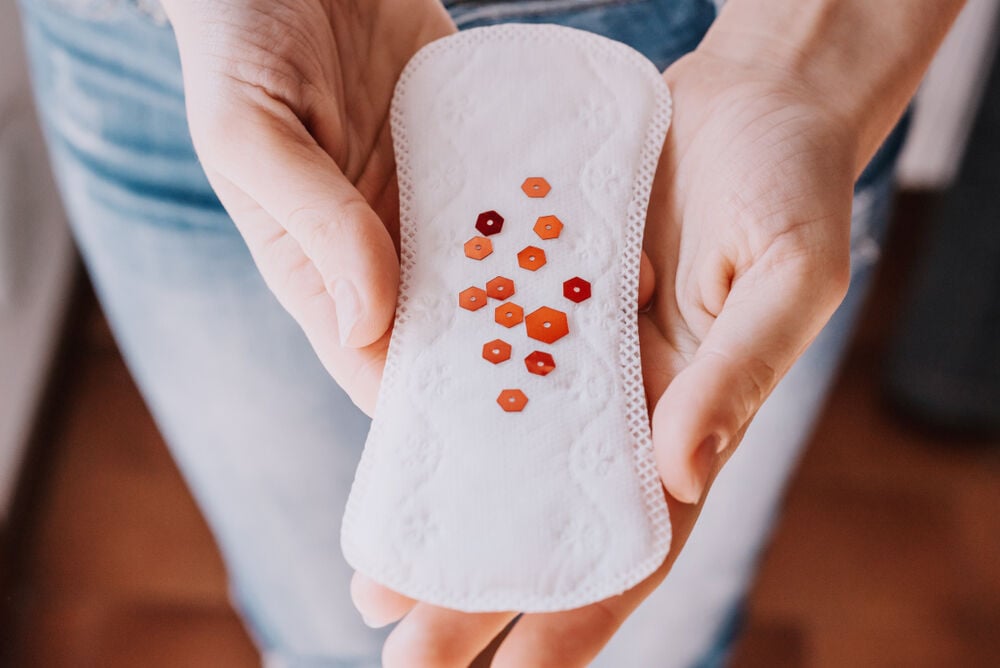Normal menstrual cycles range from 21 to 35 days (and you can predict when your next period will arrive with our online period calculator). However, it’s not uncommon to experience monthly variations in menstrual cycles. Some cycles may be shorter and others longer, which means it’s possible to have 2 periods in a month.
-
Tracking cycle
-
Getting pregnant
-
Pregnancy
-
Help Center
-
Flo for Partners
-
Anonymous Mode
-
Flo app reviews
-
Flo Premium New
-
Secret Chats New
-
Symptom Checker New
-
Your cycle
-
Health 360°
-
Getting pregnant
-
Pregnancy
-
Being a mom
-
LGBTQ+
-
Quizzes
-
Ovulation calculator
-
hCG calculator
-
Pregnancy test calculator
-
Menstrual cycle calculator
-
Period calculator
-
Implantation calculator
-
Pregnancy weeks to months calculator
-
Pregnancy due date calculator
-
IVF and FET due date calculator
-
Due date calculator by ultrasound
-
Medical Affairs
-
Science & Research
-
Pass It On Project New
-
Privacy Portal
-
Press Center
-
Flo Accuracy
-
Careers
-
Contact Us
Two Periods in One Month: Are Multiple Periods a Reason to Worry?

Every piece of content at Flo Health adheres to the highest editorial standards for language, style, and medical accuracy. To learn what we do to deliver the best health and lifestyle insights to you, check out our content review principles.
In most cases, getting a period twice a month has a simple explanation. If it happens repeatedly, however, it’s important to take notice of any signs and symptoms. Read on to learn why two periods may happen in the same month.
Two periods in one month for the first time
People with short menstrual cycles frequently have periods at the beginning and the end of a month. For someone with a typical menstrual cycle — usually about 28 days or so — having a period twice a month may be a bit surprising and seem unusual. It’s important to remember that irregular bleeding can indicate a medical concern, and it’s easy to mistake for a period. In some cases, bleeding could indicate one of the following:
- Pregnancy (uterine or extrauterine) — Since vaginal bleeding can occur during pregnancy, it’s important to talk to a health care provider if there’s a chance of pregnancy.
- A sexually transmitted infection (STI) — STIs can cause light bleeding or spotting as well as abnormal vaginal discharge.
- Miscarriage — Miscarriages are often accompanied by heavy vaginal bleeding. It’s important to visit a health care provider immediately if vaginal bleeding occurs during pregnancy.
- Hormones — Hormonal imbalance or problems with ovulation caused by thyroid dysfunction, hyperprolactinemia, and polycystic ovary syndrome can cause irregular vaginal bleeding.
- Weight — Stress, too much exercise, and weight changes can cause two periods in one month.
Period every 2 weeks or spotting? Know the difference
Some of these tips may be able to help you determine if bleeding outside an expected period is due to an irregular period, ovulation, or a reproductive issue:
- Typical period bleeding, including having two periods in one month, often means soaking through a tampon or pad every few hours. The blood is usually bright or dark red, brown, or pink.
- With spotting, usually the bleeding won’t be enough to soak through a tampon or pad. The blood is usually brown, pinkish, or dark red in color and typically doesn’t last longer than one to two days.

Take a quiz
Find out what you can do with our Health Assistant
Main causes for a short menstrual cycle and multiple periods in a month
What causes two periods in one month? It may be due to a short menstrual cycle or a health condition that results in vaginal bleeding.
Some of the things that could cause a period twice in one month are:
1. Perimenopause — Perimenopause can be an underlying cause of having two periods in one month. It’s the phase that leads up to menopause, during which the body’s hormones begin to change. The duration of perimenopause varies from person to person and may last for up to ten years. During these years, shorter or longer menstrual cycles, lighter or heavier bleeding, or even skipping periods completely are all common. Menopause officially starts after 12 consecutive months of having no periods.
2. Uterine fibroids — These are growths in the uterus. They are usually not malignant or cancerous, but may cause particularly heavy or irregular bleeding. Additional symptoms of uterine fibroids include:
- Frequent urination
- A feeling of pressure or fullness in the pelvic area
- Pain in the lower back
- Pain during sex
Health care providers can diagnose uterine fibroids by performing a pelvic exam or ultrasound.
3. Thyroid issues — Thyroid issues like hyperthyroidism and hypothyroidism may also cause 2 periods in one month, as they can cause irregular cycles. In hypothyroidism, the thyroid gland is underactive and isn’t able to make enough thyroid hormone. Signs and symptoms of hypothyroidism include:
- Feeling cold all the time
- Constipation
- Always feeling tired
- Heavy period flow
- Pale skin
- Slow heart rate
- Puffy face
- Weight gain
With hyperthyroidism, the thyroid gland is overactive and makes too much thyroid hormone. Signs and symptoms of hyperthyroidism include:
- Feeling hot all the time
- Bulging eyes
- Diarrhea
- Irritability
- Difficulty sleeping
- Weight loss
- Rapid heart rate
See your health care provider if you have symptoms of either thyroid condition, as both of them are treatable.
Stress, using birth control, extreme weight gain or loss, and bleeding disorders can also cause menstrual cycles to suddenly become shorter, resulting in 2 periods in one month.
Risk factors and complications
People with a family history of early onset menopause or uterine fibroids may be more prone to having two periods in one month. One of the complications of having frequent vaginal bleeding is anemia, which is an iron deficiency that’s common among women. Some of the signs and symptoms of anemia include:
- Fatigue
- Weakness
- Pale skin
- Headache
- Dizziness
- Irregular heartbeat
- Shortness of breath
Do you need treatment for multiple periods in a month?
The occasional double period in a month is usually not a reason for concern. However, it’s important to see a health care provider if you experience any of the following:
- 2 periods in a month for 2 to 3 consecutive months
- Heavy periods
- Large blood clots during periods (the size of a quarter or bigger)
- Lower abdominal pain, especially if it doesn’t get better within one to two days
- Severe menstrual cramps
- Light bleeding or spotting between periods, which can easily be mistaken as 2 periods in a month, that repeats from month to month
- Pain during sex
The treatment for two periods in one month depends on the cause of the bleeding. People who have a short menstrual cycle naturally or who are in the early stages of puberty typically don’t require treatment.
Health care providers may suggest hormonal birth control as a possible treatment for multiple periods in a month, as it can help regulate periods and resolve anemia that occurs due to heavy and frequent bleeding. If you’re already taking hormonal birth control and you think it might be causing you to have a period twice in one month, then be sure to talk to a health care provider.
For hypothyroidism, a health care provider may prescribe thyroid hormone replacement therapy. For hyperthyroidism, several treatment options are available, and health care providers will suggest the one that is best for each condition.
During perimenopause, health care providers may suggest menopausal hormone therapy to regulate periods until they cease with menopause.
For uterine fibroids, health care providers may recommend different therapies, including an intrauterine device, uterine artery embolization, or surgery.
Certain lifestyle changes can also help reduce stress, which certainly impacts the menstrual cycle. Possible changes include exercising regularly, practicing meditation, reducing caffeine intake, and listening to soothing music.
While having a period twice a month may be somewhat normal for people with a short menstrual cycle, it can be surprising for those who tend to have a cycle that’s longer.
In many cases, there’s no reason to worry about having a period twice a month, but sometimes it can indicate an underlying medical issue.
Since there are many different reasons for having two periods in one month, the best course of action is to mention it to your health care provider. They can help figure out the reason behind it and determine an action plan.


Hey, I'm Anique
I started using Flo app to track my period and ovulation because we wanted to have a baby.


The Flo app helped me learn about my body and spot ovulation signs during our conception journey.


I vividly
remember the day
that we switched
Flo into
Pregnancy Mode — it was
such a special
moment.
Real stories, real results
Learn how the Flo app became an amazing cheerleader for us on our conception journey.




